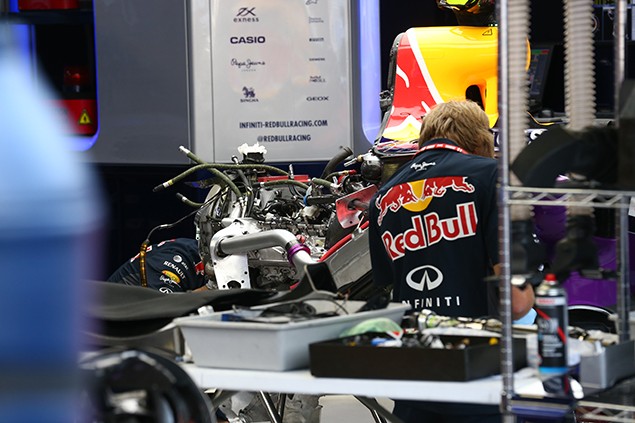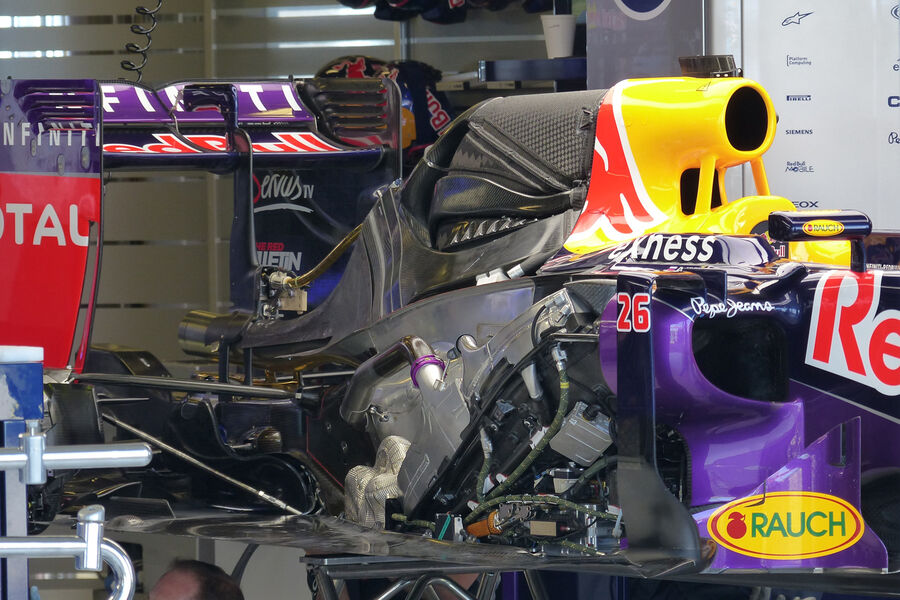- Login or Register
No account yet? Sign up
Although raising EBP has a penalty in crankshaft work lost to exhaust stroke pumping, the increase in energy available for recovery by the exhaust turbine is far greater. You are familiar with the Wright document which discusses pressure turbines as an alternative to blowdown turbines on their turbocompound engine.Tommy Cookers wrote:recovery powers above this blowdown power will only be available by raising exhaust pressure generally such powers can loosely be seen as power moved from the crankshaft source to an electrical source
NACA work seemed to show power moving on a roughly 1-for-1 basis from crankshaft to recovery turbine with raising of EBPgruntguru wrote:Although raising EBP has a penalty in crankshaft work lost to exhaust stroke pumping, the increase in energy available for recovery by the exhaust turbine is far greater .....Tommy Cookers wrote:recovery powers above this blowdown power will only be available by raising exhaust pressure generally such powers can loosely be seen as power moved from the crankshaft source to an electrical source
Gruntguru did some constant pressure calculations in another thread, see above quoted.gruntguru wrote:If MAP = BP the turbo machinery is a simple Brayton cycle - the combustor being replaced by the piston engine as its heat source.
In the F1 case, the heat input to this Brayton cycle (Gas Turbine) is relatively fixed wrt PR. The surplus work (Wt - Wc) however, is dependent on PR. The theory behind this is well established.
There are useful calculators here https://www.engineering-4e.com/calc4.htm for compressor and turbine power (you can use the isentropic compression calculator for expansion as well or use the expansion calculator further down the page). The calculators are for 100% isentropic efficiency so the actual turbine work will be about 0.8 times the output from the calculator and the compressor work will be equal to the calculator output divided by 0.8.
Have fun playing. Don't forget to adjust the massflow and turbine inlet temp when you change the PR (boost).
SIMPLE EXAMPLE.
Compressor Massflow = 0.55 kg/s
Turbine Massflow = 0.578 (AFR = 19.6:1)
PR = 3.3
T comp inlet = 298 K
T turbine inlet = 1000 K
Calculator gives Wcomp = 66.8 kW and Wturb = 161.9 kW (Need to use 57.8 kg/s to get 3 significant figures into calculator)
At 80% eff for comp and turb Pcomp = 66.8 x 1/0.8 = 83.5 kW and Pturb = 161.9 x 0.8 = 129.5 kW
Pnet = Pturb - Pcomp = 129.5 - 83.5 = 46 kW surplus.
Now try it at PR = 2.5 and compressor massflow 0.5 x 2.5/3.3 = 0.378 (assuming intercooling to ambient)
Turbine massflow is 0.406 and AFR = 14.5:1
T turbine inlet will be higher - say 1220 K
Calculator gives Wcomp = 33.8 kW and Wturb = 114.5 kW
At 80% eff for comp and turb Pcomp = 33.8 x 1/0.8 = 42.3 kW and Pturb = 114.5 x 0.8 = 91.6 kW
Pnet = Pturb - Pcomp = 91.6 - 42.3 = 45.4 kW surplus.
So interestingly, at 80% isentropic efficiency for the turbine and compressor, changing the PR has little effect on surplus energy to the MGUH. At lower efficiencies lower PR will be favoured and at higher efficiencies, higher PR will produce more surplus energy.
I looked a bit around for pulse-to-pressure converters, which are essentially converting the pulse velocity of the single cylinder outputs into pressure by joining them into a diffuser.
According to a paper (from Basshuysen IIRC) in best case a pressure increase of 1.4x cam be achieved in the diffuser without negative effects on backpressure to the single cylinders.
Here are two quickly found articles about this:
http://road-transport-technology.org/Pr ... 20Yang.pdf
https://books.google.ch/books?id=AzTFSH ... er&f=false
Back Pressure must exist, if there is any form of load. Be that mechanical or electrical.Tommy Cookers wrote:sorry ringo, I can't understand which bits (if any) in my post you accept and which you don't
in my post earlier 1147 am yesterday I refer to earlier posts of links to the source material
the NACA source material shows migration of power from crankshaft to recovery turbine as turbine load (& exhaust pressure) is raised
I thought people were anyway taking that position as common sense
it's not a generator on a gas turbine because by gas turbine you/we mean steady flow and so a constant (modest) pressure aka pressure working of the turbineringo wrote: ......Back Pressure must exist, if there is any form of load. Be that mechanical or electrical.
.....the F1 engine. It's just a motor generator on a gas turbine, just like any power station. Back pressure is there for sure.

Great. Many thanks.Tommy Cookers wrote:a compressor (first stage) supercharging the engine via that pipe (and the other standard 'engine(driven)-stage' supercharger)
not a turbocharger because it's not driven directly by the turbine but by a variable speed coupling
the turbine being directly coupled to the crankshaft for recovery (turbo-compounding)
3090 hp with WI - but never in production (Allison 1710 E22 aka 127)
try this also
http://www.missbardahl.com/engine/tech/ ... fficen.pdf
gruntguru wrote:Interesting plumbing. Current layouts invariably seek to minimise length of the exhaust plumbing to the turbine (to preserve heat energy). I guess because the early turbines were limited to much lower turbine inlet temperatures.
Also because aircraft applications are less sensitive to transients. Long pipework takes a few seconds to heat up when transitioning from light load to full power with dreadful turbo lag being the result.

